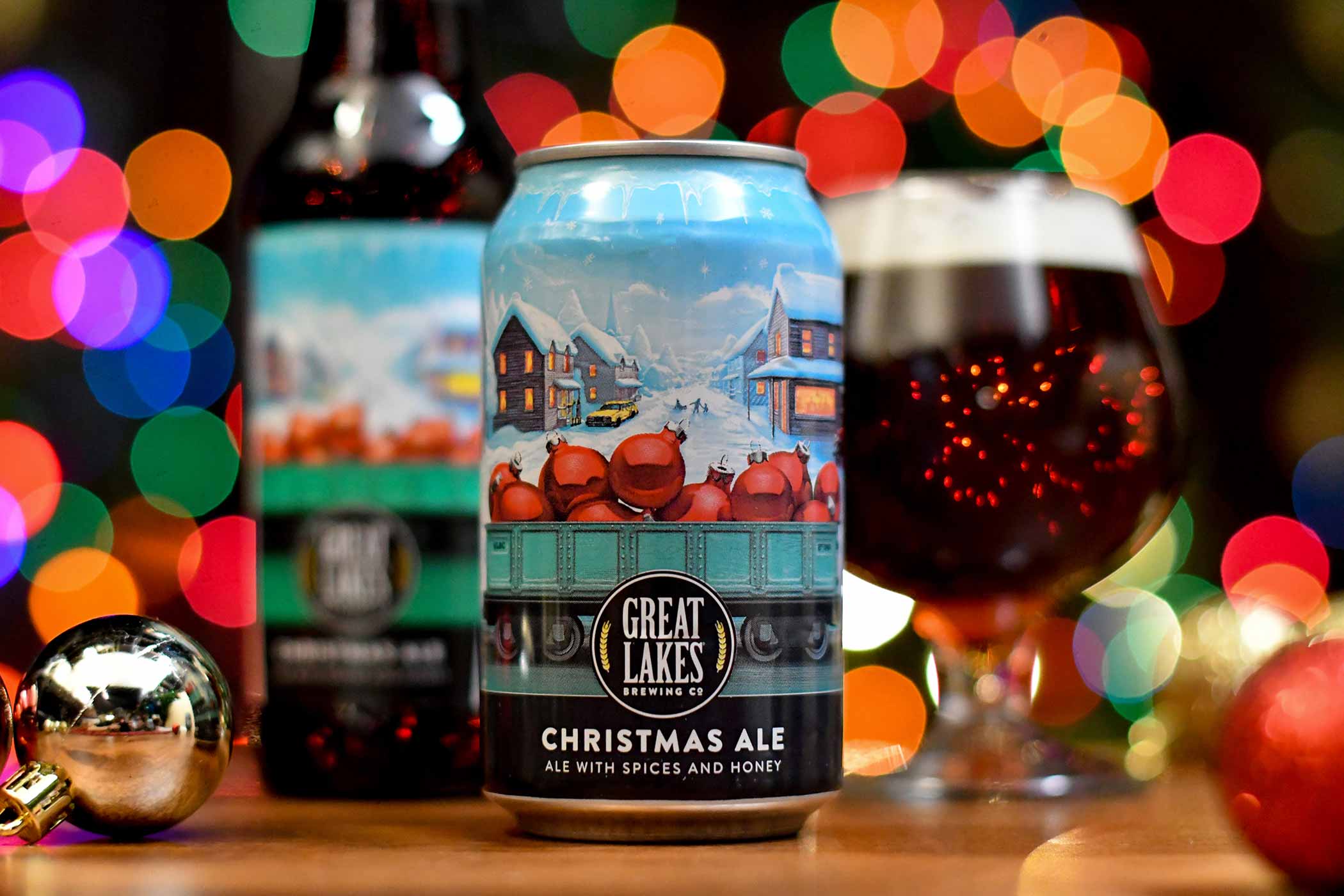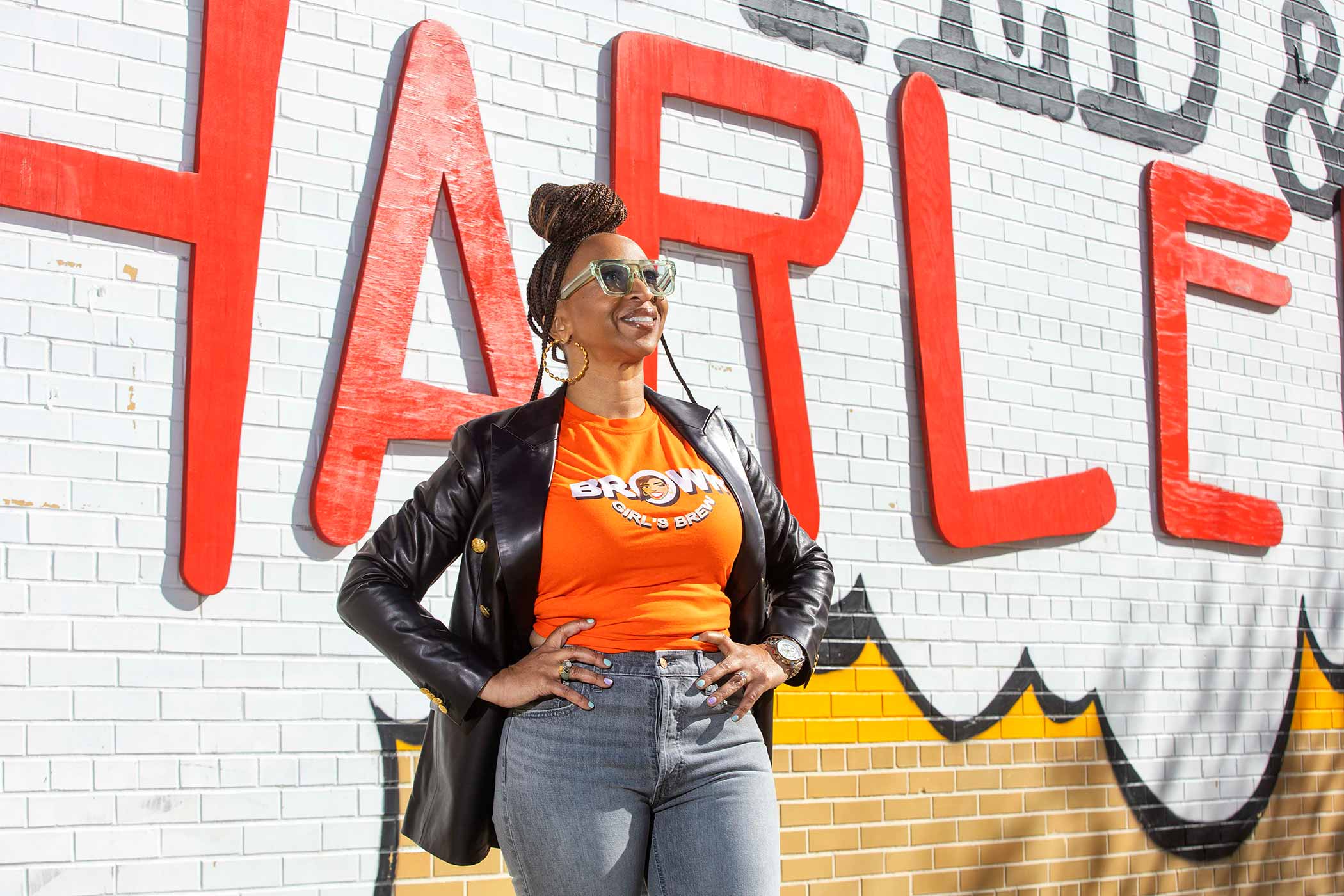Shop
The Cult of Christmas Beers
Twelve bottles a popping....
December's Top Stories
What makes us stand in line for hours just to pick up a few hazy boi cans? Or what has us planning a dream vacation to the little town of Santa Rosa in early February for a chance to snag a sip of Pliny the Younger? Why do we fiercely fight to protect that one American light lager we grew up drinking—are you team Old Style? PBR? Shiner? Genesee? Natty Boh? Hamm’s? And above all else, why, for the love of St. Nick, do we love Christmas beers so much? Look behind any storied holiday beer, and you’ll find a tradition as rich as opening presents underneath the tree, drinking hot cocoa around the fire, or lighting the Menorah for Hanukkah or Kinara for Kwanzaa.
With names like Celebration Ale, Christmas Ale, and The Mad Elf, Christmas beers seem to invoke a romantic nostalgia in all of us. Often causing us to join a line around the block to taste a first tapping (as is the case in Cleveland, OH, for Great Lakes Brewing Company’s First Pour event) or be that pesky patron to keep asking when that beer will be ready even though you already know when (like with fans of Sierra Nevada’s Celebration) or load up the trunk with cases of a beer that’s only around for a few months (The Mad Elf doesn’t sit on shelves for very long!).
As we all know, the holidays are about tradition. And tradition can hit us as strongly as a 12.5% ABV stout, especially when it comes to beer.
Just look at the history of some of these most revered Christmas beers, and it will be as clear as a silent night why Christmas beers have a cult-like following.
A Brief History of Christmas Beers
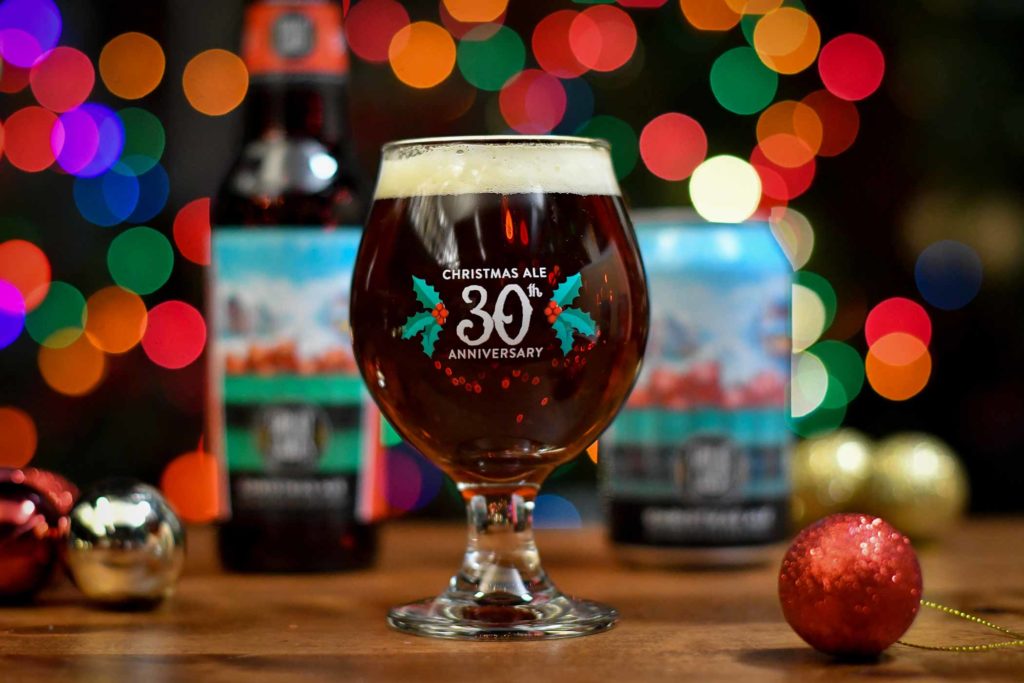
Photography courtesy of Great Lakes Brewing Co.
Christmas beers have been around for a while, reaching as far back as pre-Christian Scandinavia when Vikings made Jul or Yule to commemorate Norse gods and celebrate the winter solstice.
These Scandinavian Christmas beers initially used dark malts endemic to the region, producing blacker, maltier beers. And perhaps we can see those influences in America when Scandinavian immigrants brought their brewing traditions to the U.S.
Over time, many cultures have seemingly had a hand in brewing some type of traditional holiday beer, whether it’s bière de Noel, a darker bière de garde in France; weihnacht, a sort of Munich dunkel in Germany; or even just Stella Artois, a lighter Belgian ale in Belgium. Fun fact: The word stella means star in Latin and represents the Christmas star.
In America, craft brewers constantly find inspiration from the spices, ingredients, treats, and customs of the holidays.
Even from the beginning of the craft brewing movement, when former Anchor Brewing Owner Fritz Maytag brewed the first Christmas Ale in 1975.* Many consider this beer one of the first American Christmas beers.
And honestly, that first recipe? Well, it certainly wasn’t what many considered a Christmas beer style at the time.
*Editor’s Note: Although Turkish billionaire and Chobani founder Hamdi Ulukaya acquired Anchor earlier this year, the brewery remains closed to the public and is no longer producing this beer at the time of publication. For an early version of this piece, we interviewed several folks who previously worked at Anchor and who gave us great context. With that in mind, we’re keeping the history and stories they shared with us in this piece, but we have removed some content that is no longer relevant.
But What Exactly Is a Christmas Beer Anyway?
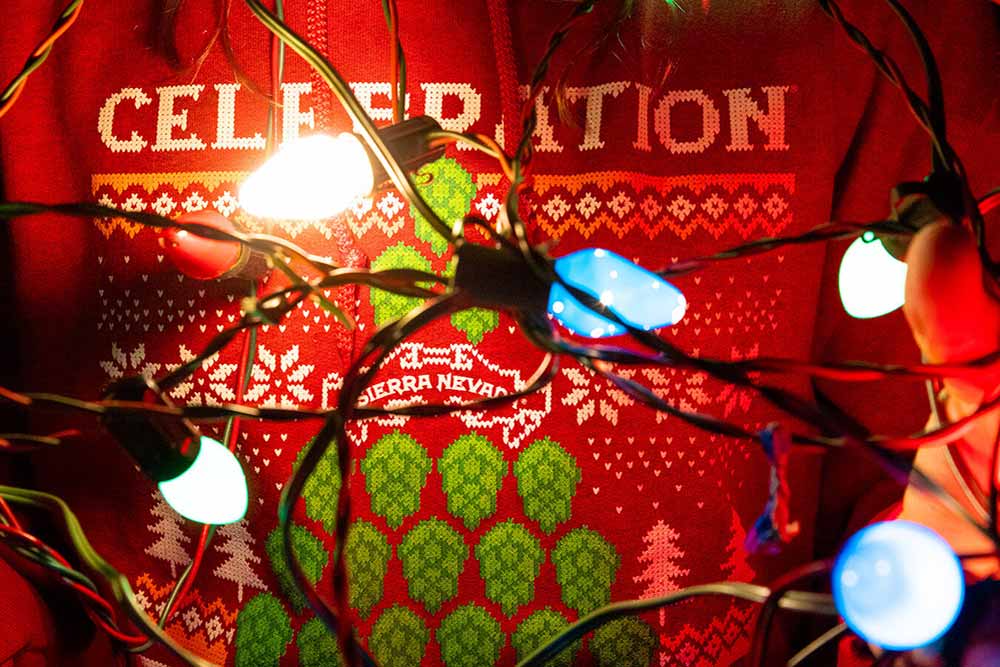
Photography courtesy of Sierra Nevada Brewing Company
To us, the definition can get as twisted as those pesky strings of Christmas lights.
But in the beginning, Christmas beers in America seemed to follow the traditional European style of darker, spiced beers.
In fact, the Beer Judge Certification Program lays out guidelines for Christmas beer, which is “a stronger, darker, spiced beer that often has a rich body and warming finish, suggesting a good accompaniment for the cold winter season.”
But in reality, any brewery that now produces something during the holiday season can spin it any way they see fit. They can add traditional spices like nutmeg, cinnamon, and clove, emulate holiday treats like eggnog or milk and cookies, leverage labels and designs that evoke that seasonal nostalgia, or even do something completely different, like celebrating the festive hop harvest.
For most, the Christmas beers that have stood the test of time, attracting a devoted following year after year, have tapped into that special recipe that creates traditions.
Christmas Beers Start Holiday Traditions
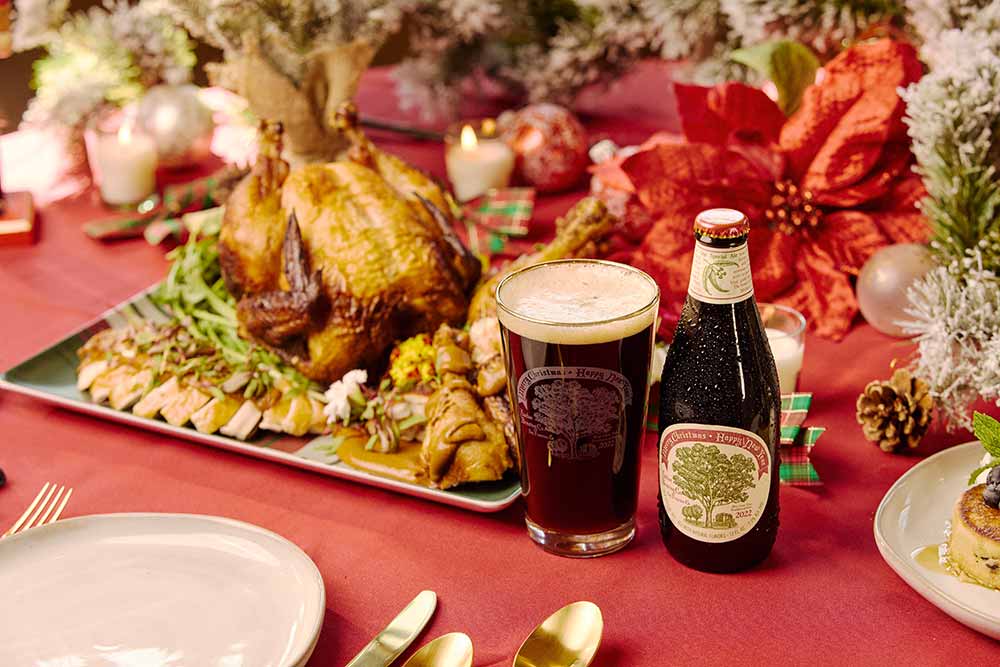
Photography courtesy of Anchor Brewing Co.
When Maytag brewed Anchor Christmas Ale for the first time, he probably couldn’t have imagined how ingrained the beer would become in drinkers’ own holiday traditions.
Maytag came up with the idea for a Christmas Ale after taking a trip to England.
He returned inspired to brew two new beers: Old Foghorn barleywine and Christmas Ale.
But the very first Christmas Ale, released on Nov. 17, 1975, wasn’t anything like a darker, spiced beer. In fact, the very first version was actually an all-pale-malt ale dry-hopped with Cascade hops.
See, Maytag had brewed Anchor Liberty Ale for the first time earlier that year, commemorating the 200th anniversary of Paul Revere’s ride. After visiting England and having a hard time finding all-malt beers, he decided to brew his own.
So technically, the very first batch of Christmas Ale was the second batch of Liberty Ale. The working title was even 2nd L.A. before Maytag named it Our Special Ale. (Still with us?)
“In an odd way, the trip made Fritz even more determined to do something special and unique to San Francisco and Anchor,” says former Anchor Historian David Burkhart, whose thirty-one years at the brewery before it closed in 2023 led him to compile a book on Anchor’s history called “The Anchor Brewing Story.”
To help promote Our Special Ale, Maytag took out an ad in the San Francisco Chronicle saying come and get our special Christmas Ale. “He had no idea how the ad would be received, but there was a line around the corner with people interested in trying this beer,” former Anchor Director of Brand Marketing Angela Knotts once told us. “From day one, there was an energy for Christmas Ale. … That tradition continued year after year.”
Before the brewery closed, Anchor Christmas Ale had become as much a part of people’s holiday season as baking cookies or drinking eggnog. You can almost certainly still find bottles aging in people’s houses today (cough, like ours).
Former Anchor Brewmaster Dane Volek, who made this beer for twelve years, said it was “all about the renewal of the season and celebration. … It’s our gift for the year to be unwrapped and enjoyed by all.”
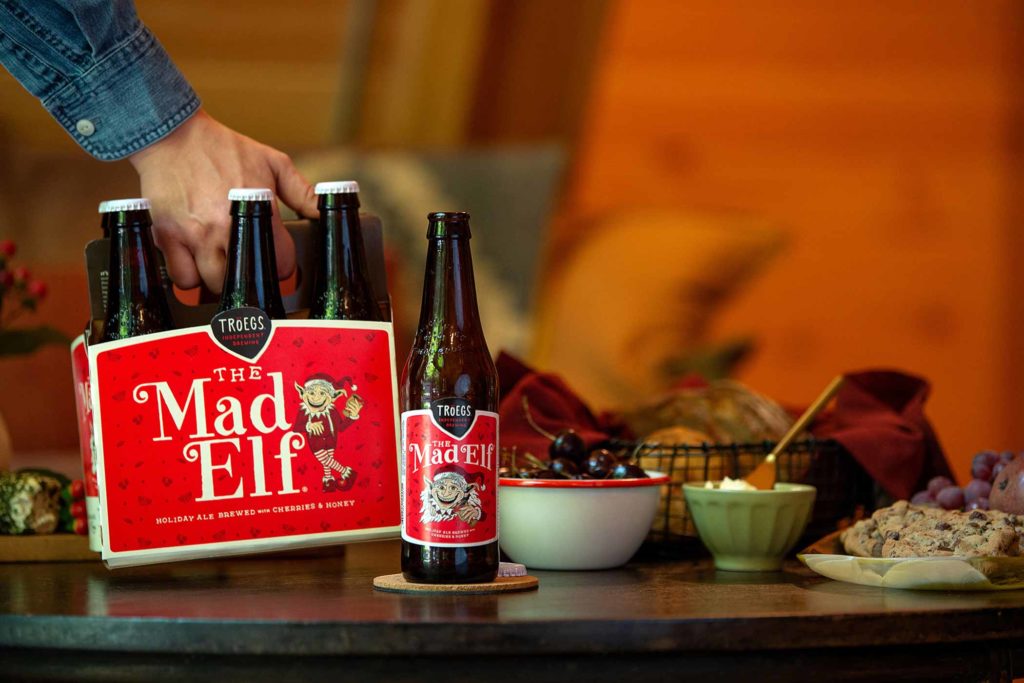
Photography courtesy of Tröegs Independent Brewing
Similarly, Tröegs Independent Brewing’s holiday beer, The Mad Elf, became an almost accidental hit.
When Tröegs Co-Founders and brothers Chris and John Troegner decided they wanted to make a holiday beer, they brewed a Belgian beer, added too much fruit and honey, walked away, and returned the next day to find “a big foamy mess,” says Jeff Herb, marketing communications coordinator at Tröegs. Or perhaps it was just a pesky elf causing havoc in the brewhouse. We may never know.
But what we do know is that the beer turned out “legendary right out of the gate,” says Herb. “The first batch sold out in advance … and immediately had this cult status.”
The Mad Elf tapped into a niche just by being a holiday beer. Folks saw The Mad Elf as a way to start a new tradition or introduce the beer into their old ones.
Today, Herb says it’s not uncommon for grandmothers to come to the brewery to buy three cases of The Mad Elf because their entire family expects to drink it when they return home for the holidays.
“It’s cool to hear from those fans that are borderline obsessive,” says Herb. “People that absolutely love it and think it’s the greatest thing since sliced bread. … It has definitely found that holiday vibe that attaches itself to so many people.”
Some fans even send in photos of themselves under the Christmas tree wearing matching The Mad Elf shirts or filling up their trunks with six to seven cases of beer to ration throughout the year.
Because, and here’s the kicker, you can only get The Mad Elf from around October through December.
It doesn’t hurt this beer’s cult-like status that people can only fill their cars with cases for a limited period every year.
Limited-Edition, Seasonal Beers Gone in the Twinkle of an Eye
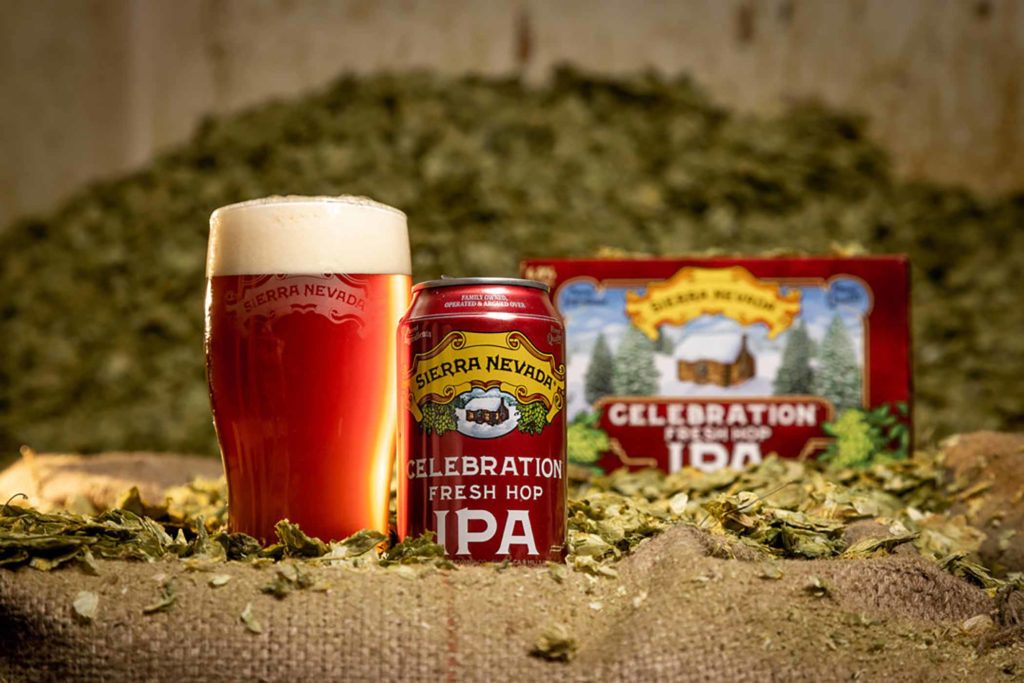
Sierra Nevada Celebration Fresh Hop IPA | Photography courtesy of Sierra Nevada Brewing Company
Although Christmas beers may differ in recipes, the one thing that almost always stays the same is that, like the holidays themselves, they are only available for a short time each year.
But perhaps the clock ticks fastest for Sierra Nevada’s Celebration Ale, a unique take on a Christmas beer that celebrates freshly picked Cascade and Centennial hops.
Inspired by Anchor’s iconic Christmas Ale, Sierra Nevada Founder Ken Grossman made his own seasonal version. But he wanted to brew his holiday beer with a bit of a twist. One focused just on the perfection of the hops he loved.
Considered a fresh hop beer, Celebration Ale includes a dry hop of whole-cone Centennial and Cascade hops picked at the peak of freshness and delivered to Sierra Nevada’s Chico brewery in California in two to three days and the Mills River location in North Carolina within five to seven days.
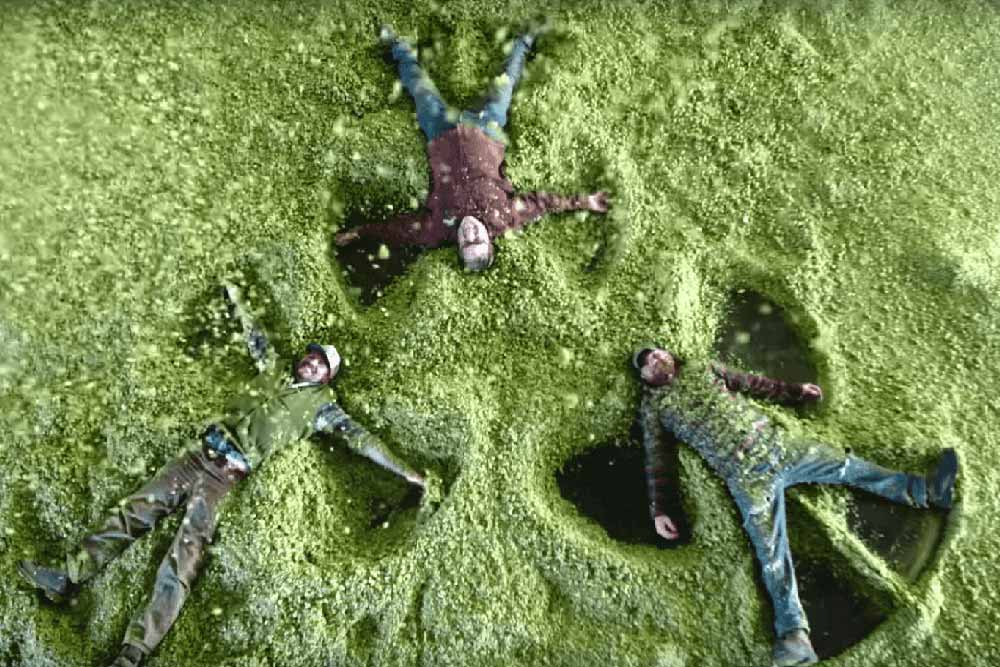
Photography courtesy of Sierra Nevada Brewing Company
“It’s on the minds of everybody going in for hop selection,” says Sierra Nevada Product Manager Terence Sullivan, who has been brewing Celebration Ale for thirty years. “We’re not only buying for the entire year, but we’re buying for Celebration Ale.”
When we last checked in with Sierra Nevada in 2022, they brewed roughly 40,000 barrels of Celebration Ale with about 80,000 pounds of hops split equally between Cascade and Centennial, which comes out to about 400 bales of total whole-cone hops. Sierra Nevada doesn’t dry hop with T-90 pellets, Cryo, or anything like that; they use 100 percent whole-cone hops.
Which means once growers pluck those hops, Sierra Nevada needs to brew with them pronto.
Brewing with the fresh hops takes Sierra Nevada about twenty-eight days. And there is no sweeter feeling for anyone at the brewery than tasting that first batch of Celebration Ale during the second week of October.
“I don’t know if everyone feels the same way as I do, but when Celebration comes out and on in our pub, that’s my go-to beer until I know it’s gone on January 1st,” says Sullivan.
Which probably adds to its cult-like following, the fact that you can only get it on draft and in package for about three months out of the year.
When the ball drops and you ring in the new year, Celebration Ale drops out of the market, too.
You must drink this Christmas beer while it’s fresh during the holidays. It’s a good thing it’s a beer built for winter and celebrating, especially around family dinner tables.
“It embodies the holidays, and what we do in the holidays is celebrate, whatever it is that you celebrate,” says Isaiah Mangold, head innovation brewer at Sierra Nevada. “Celebration is a universal term. It’s exactly what I get when having a pint of Celebration Ale with a coworker or family or bringing it to a celebratory event. … It embodies that celebration of happiness, passion, togetherness, and community.”
Because what the holidays signify is a turning of the seasons and a time to indulge. When “it’s cooler evenings, rainy, drizzly, [and] Celebration Ale is on the shelves, we start thinking about Thanksgiving, Christmas, the holiday season, and lining up vacations,” laughs Sullivan.
Or playing good old-fashioned hooky.
Indulgent, Decadent Christmas Beers: Naughty or Nice?
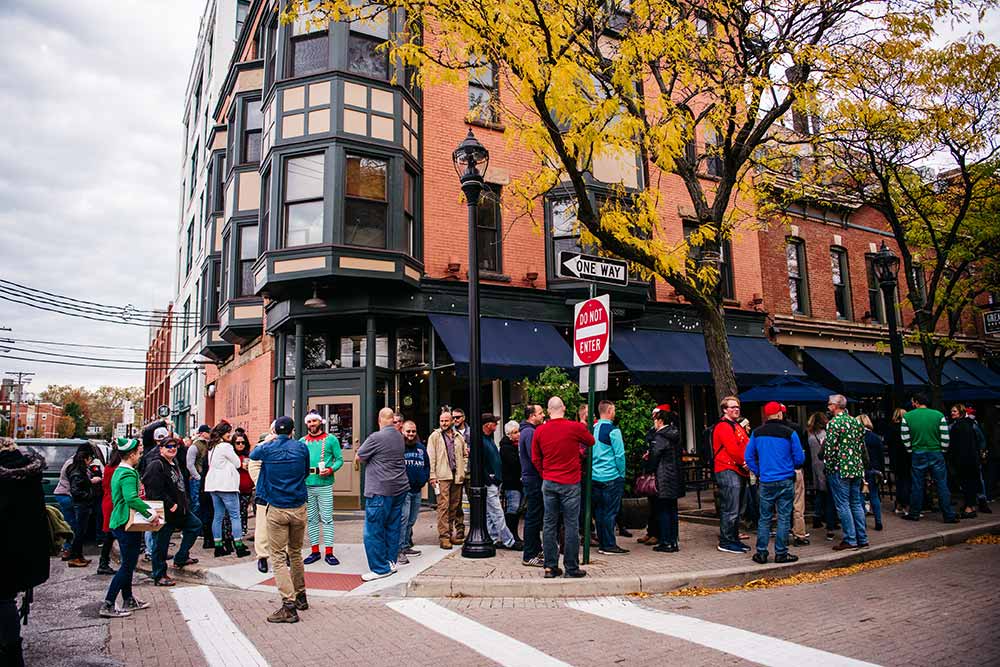
Photography courtesy of Great Lakes Brewing Co.
Much like grandmothers show up at Tröegs to load up their cars once The Mad Elf is available, the fine folks of Cleveland line up around the block for the chance to get that first taste of Great Lakes Brewing Company’s Christmas Ale every year.
“A lot of people play hooky from work on a Thursday,” laughs Mark Hunger, brewmaster at Great Lakes Brewing Company. “People are lining up by 7 o’clock in the morning to be the first ones through the door.”
In what has become known as First Pour, Great Lakes goes all out to celebrate Christmas Ale, performing a ceremonial delivery of the first keg through the door. Even the mayor gets in on the action, giving a proclamation of celebration. “It’s a lot of hype, a lot of excitement,” says Hunger. “When we start pouring, the taps don’t stop for twelve hours. I figured it out, and we poured twenty-five barrels of Christmas Ale alone … which, during that time period, roughly [equals] a pint of beer every five seconds for eleven or twelve hours.”
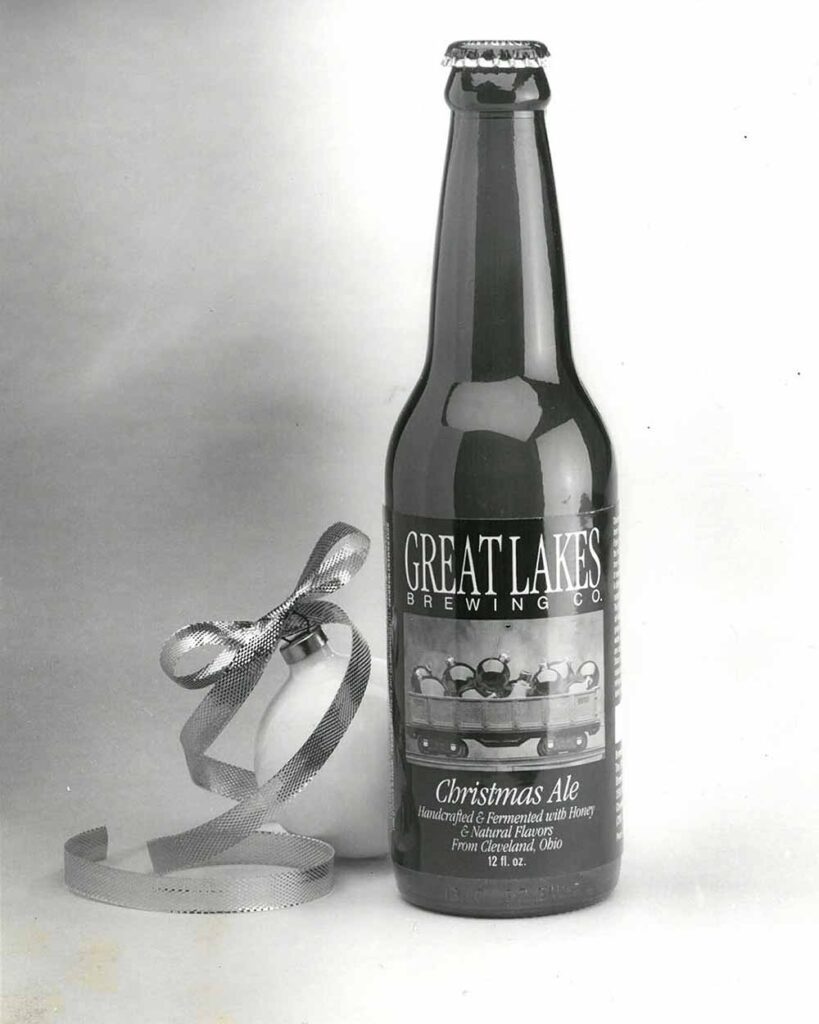
Photography courtesy of Great Lakes Brewing Co.
That’s the fervor Christmas Ale has stoked around this Ohio city and the greater Midwest. “We were one of the first to come out with a holiday ale in this area,” says Hunger. “People have grown up with it … people know it, and it always tops their list.”
But Great Lakes Christmas Ale’s capacity to inspire indulgence reaches beyond the city with folks flying in from all over because it “brings a lot of joy and happiness to them and they have a great time,” says Hunger, recounting that this year the first four to five people in line were dressed in bunny suits from the iconic Christmas movie, A Christmas Story, filmed in Cleveland. “You walk up and down the line … and you hear so many stories like that,” says Hunger.
We can only get away with those kinds of little (or big) indulgences around the holidays. Because let’s be honest, Christmas is really a time to make excuses for being a little bit naughty.
The Magical Powers of Nostalgic Holiday Flavors
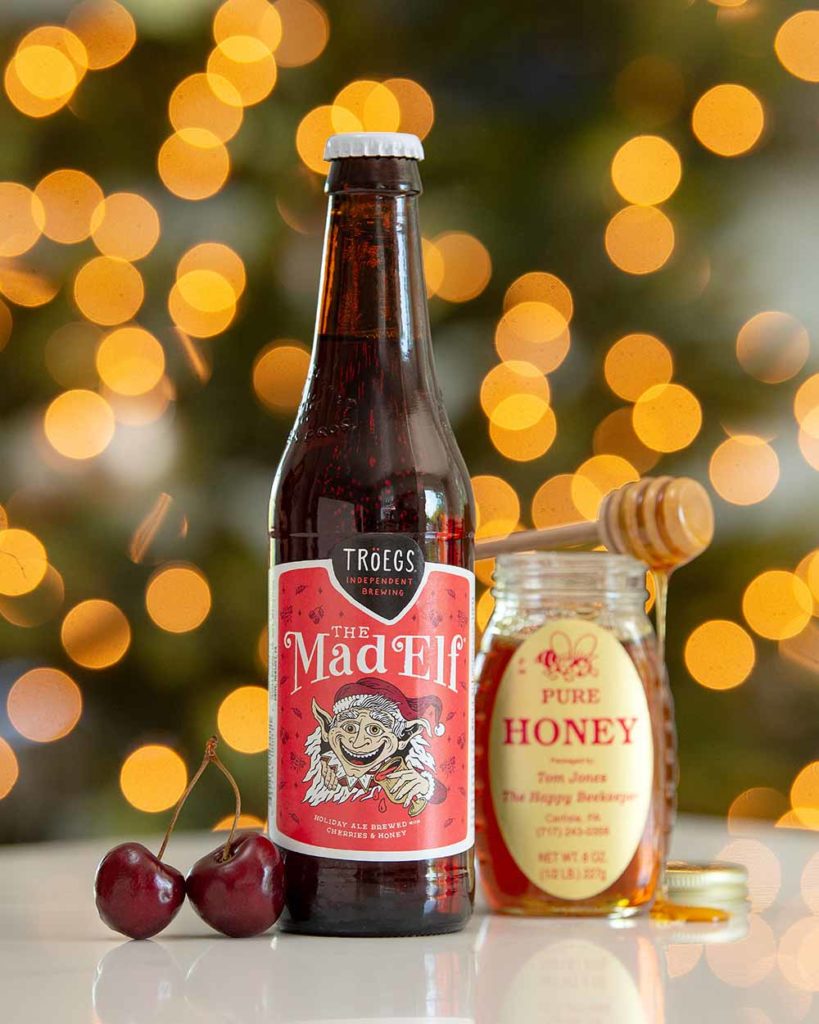
Photography courtesy of Tröegs Independent Brewing
For some, Christmas beers seem to have these magical powers, turning people who don’t even drink beer into converts for just a short time.
“People who don’t even drink beer, the one 6-pack or case of beer they buy a year is Christmas Ale,” says Hunger. “It’s become ingrained in their holiday spirit and things they do around the holidays.”
Similarly, at Tröegs, Herb says he has met plenty of people over the years who’ve told him they don’t like beer, but they love The Mad Elf and “have to have it every year around the holiday,” he says.
For those who enjoy beer, Christmas versions offer flavors different from the norm or highlight ingredients that emulate the holidays.
For The Mad Elf, Tröegs includes Pilsner, Munich, and Chocolate malt in the base before adding local wildflower honey from a guy in Carlisle, PA, called the Happy Beekeeper. For Tröegs, he sources a whopping 25,000 lbs of Pennsylvania honey from apiaries around the state each year. On top of that, Tröegs adds five different varieties of cherries—Bing, Lambert, Van, Royal Anna, and Montmorency—into the fermenter for a sweet and tart kick along with a distinctive Belgian yeast that highlights the allspice, clove, and light cinnamon notes.
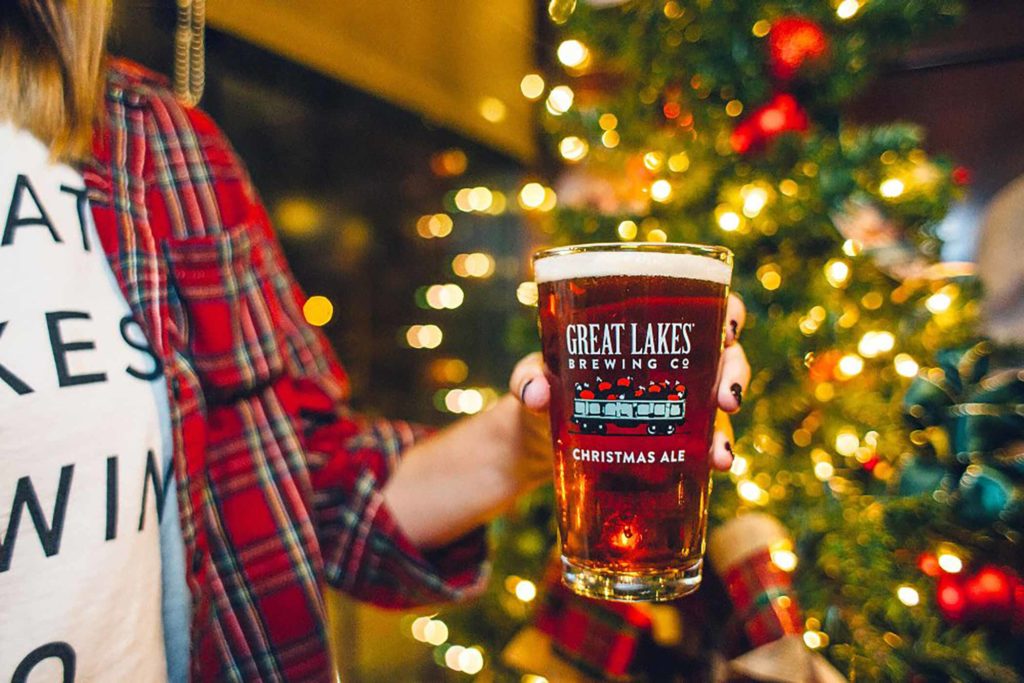
Photography courtesy of Great Lakes Brewing Co.
Great Lakes Christmas Ale also includes an addition of honey. Hunger says a couple of years ago, they used over 200,000 pounds. Along with 7,000 pounds of both ginger and cinnamon—two spices added to this strong amber ale (7.5% ABV).
The ginger particularly gets some extra special love. Hunger says they buy boxes of whole gnarly ginger root that they throw into a chopper and snip into little half-dollar pieces that go in a basket with cinnamon sticks and get dropped in the boil. “Back in the day, we used to have a bunch of cutting boards and guys up there with knives chopping up ginger,” laughs Hunger, noting that investing in a chopper has paid off in spades. “People are wide-eyed when they see us brewing it.”
Both Great Lakes and Tröegs have remained true to their original genius, keeping their recipes intact for over thirty and twenty years, respectively.
“We didn’t want to mess with a masterpiece,” says Herb.
But for some breweries, messing with the minds of their drinkers (and their masterpieces) has actually been the backbone of their brilliant beers.
A Charlie Brown Christmas: Special Characters and Designs
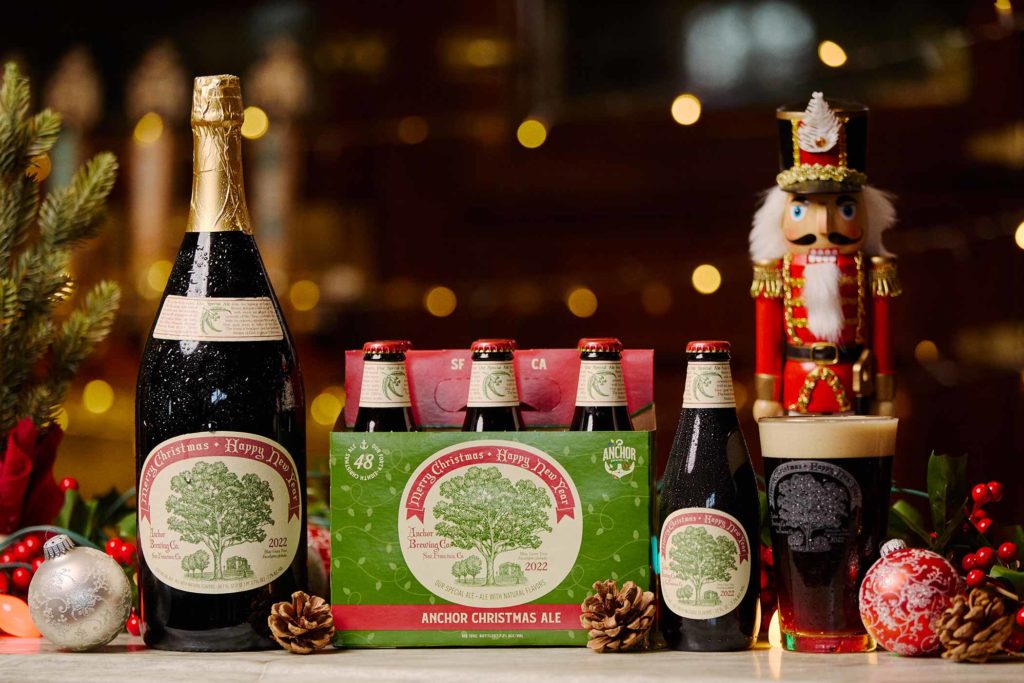
Photography courtesy of Anchor Brewing Co.
Uniquely, Anchor Christmas Ale always featured a specific tree on the label. Each has its own story and intention.
The tradition began in 1975 when Maytag chose a generic, symbolic tree as the model. With each year, came a new tree and a new meaning.
“Fritz loved the idea … of a new vintage—of something each subsequent year with a new label with new artwork on it,” says Burkhart.
That first year, he also had a printer die-cut blank neck labels to attach to each bottle so people could take those and write their own holiday message on it (e.g., “Merry Christmas from Joe to Mary”).
Originally intending to change the artist every year (an idea Maytag got from the famous winemaker Baron Philippe de Rothschild, who used different artists, from Salvador Dali to Andy Warhol, on his Bordeaux vintage labels), Maytag basically stuck with one artist.
Jim Stitt designed the original label in 1975. Although Maytag hired someone else in ‘76, he realized he wanted to stick with Stitt going forward.
From 1977, Stitt drew a new tree every year for the next forty-four labels. And although he retired in 2019, the now-ninety-five-year-old Stitt is enjoying retirement, according to Burkhart.
“I challenge any designer on earth to create forty-eight distinctive labels that need both red and green, a tree, has to say ‘Merry Christmas and Happy New Year,’ and ‘Anchor Brewing,’ and ‘Our Special Ale,’” says Burkhart. “Within those narrowly defined parameters, Anchor has created a remarkable assortment of labels over the years—and trees!”
It was an essential feature of Christmas Ale, with each tree generating its own story. (Find a few of our favorites here.)
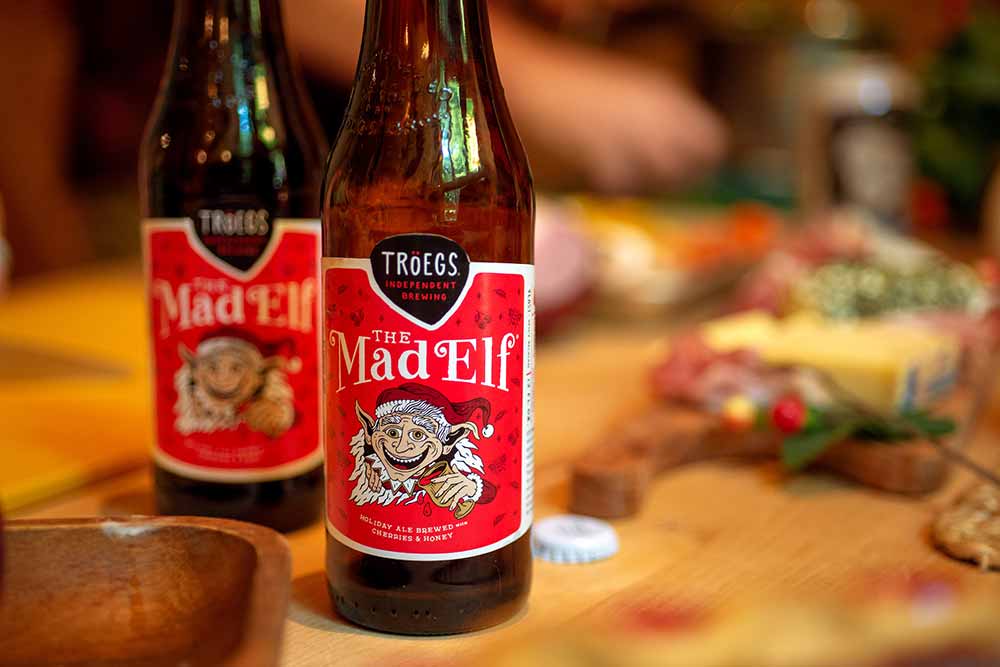
Photography courtesy of Tröegs Independent Brewing
Similarly, The Mad Elf’s iconic design helped push it into the “Holiday Hall of Fame.”
Tröegs’ Christmas beer character has undergone four iterations over the last two decades. “[Originally,] there was a napkin sketch that helped push the name forward,” says Chris Troegner. “He’s not angry, just a little squirrely.”
But Tröegs Content Manager Jeremy Drey says the second version of the elf has by far been the most popular and the longest-tenured, sticking around from 2004 to 2014. The third design came with a brewery rebrand in 2015 and lasted until 2020. The latest (and fourth) design, from Florida illustrator Josh Noom, “harkens back to the second elf, but is all about being friendly and welcoming to drink the beer,” says Drey. “There is a fine line, especially when working on this iteration, of not having the elf look too young, too old, or too drunk. We put a lot of thought into it and it harkens back to the … fan favorite.”
At Sierra Nevada, the brewery’s Celebration Ale has also become widely known for its bright red label. For some, it represents the colors of Christmas, presents, and, well…celebrations.
The Most Wonderful Time of the Beer
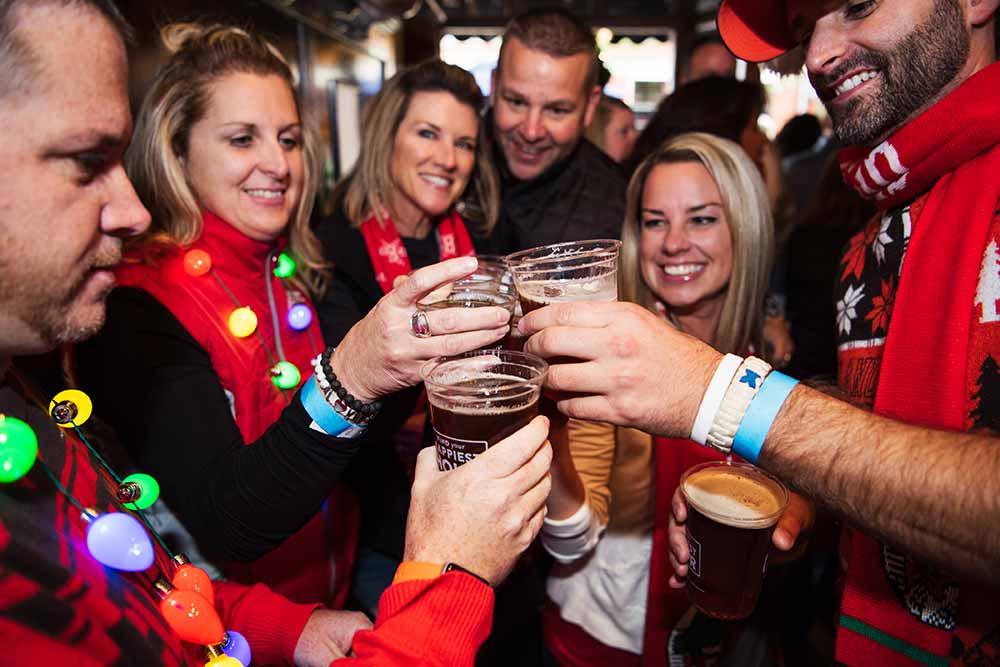
Photography courtesy of Great Lakes Brewing Co.
As you can see, we can’t pinpoint just one reason why Christmas beers have captured the imaginations and hearts of so many people—some who don’t even drink beer!
Like building a great fire, a practice that involves gathering kindling, cutting wood, assembling the logs correctly, and eventually creating a spark, Christmas beers succeed because of all these distinct rituals.
And to us, that’s the fabric of a true tradition. It doesn’t have to make sense to everyone (again, ugly sweaters, anyone?). It just has to mean something to you and those in the celebration.
Now, that’s the true magic of the holidays.
The Top Christmas Beers to Try During the Holidays
Editor’s Note: An early version of this piece included Anchor’s Christmas Ale. At the moment, Anchor is currently closed to the public and no longer producing this beer. With that in mind, we’re not officially listing it here, but we wanted to recognize its significance. If you do happen to have a bottle chilling in your cellar or you stumble upon one at some point, we highly recommend you try it!
Celebration Fresh Hop IPA – Sierra Nevada Brewing Co.
Chico, CA
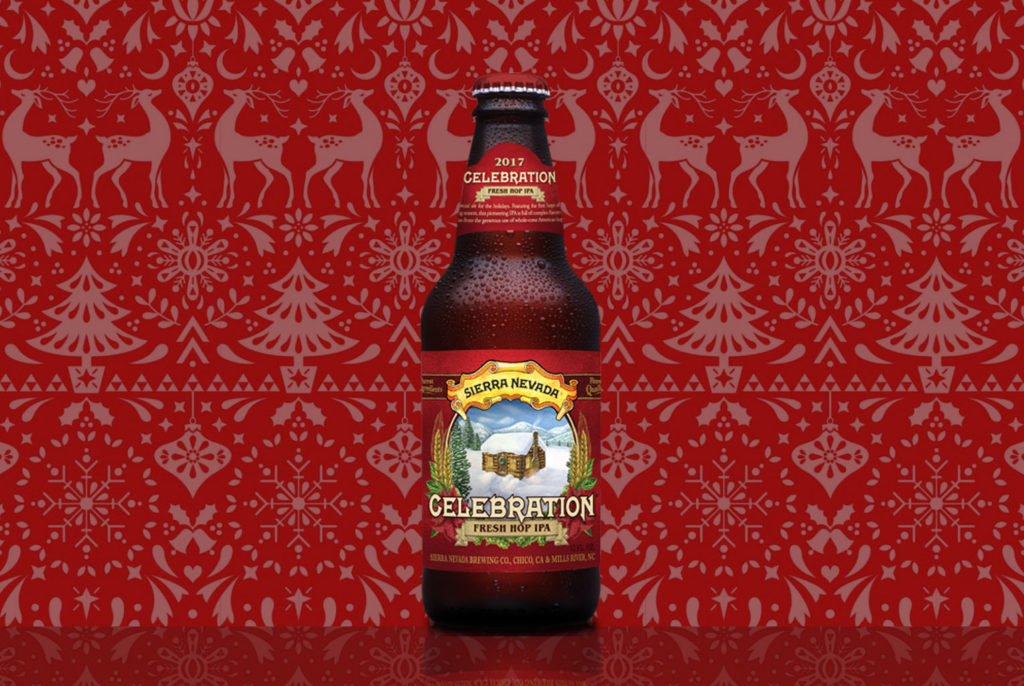
American IPA – Unlike other Christmas ales that feature spices or fruit, Celebration Ale, at its core, is a beer all about hops.
Which is why we love it so much.
Pouring out a beautiful ruby red color, Celebration Ale almost looks precisely like an ornament you’d hang on the tree or a candle you’d place in the kinara (candleholder) for Kwanzaa (red candles represent one of the colors of the Pan-African flag along with the struggles of the past).
Not an easy color to hit in beer, red really represents the holidays. “Visually, it’s an absolutely striking beer,” says Mangold.
And the hue stands out in contrast to the pillowy white head. “To me, one of the real standouts is the foam,” says Sullivan. “It performs great in a pint glass. The lacing you get from Celebration Ale is so inviting, and it’s such a pretty beer in any type of glass.”
Along with its striking color, Celebration Ale will hit you in the nose with citrus, pine, and that aforementioned rose characteristic. “But you get a little backbone of caramel and toffee notes too,” says Sullivan, courtesy of the caramel malts Sierra Nevada uses in the recipe.
And here’s where things get interesting.
Sullivan and Mangold consider Celebration “one of the first true West Coast IPAs ever made,” says Sullivan. But some jestingly disagree.
Those like Russian River Brewing Company Co-Founder Vinnie Cilurzo, who playfully argues that West Coast IPAs do not include caramel malt and color. “Vinnie always gives us s*** because we use C-60 caramel malt because why would you ever do that [in a West Coast IPA],” laughs Sullivan. “But he loves Celebration Ale; he just likes to bust our chops.”
And the malt is crucial in Celebration Ale. It softens the edges of what could be an overly bitter beer. “It reminds me of a lot of really great salsas,” says Sullivan. “The flavor is not overly aggressive, but there is a nice sharp bitterness … not over the top, but just the right amount of bitterness that makes you want to come back for another sip and another sip.”
Because on the palate, Celebration Ale truly shines like a highly polished ornament. “Celebration is so perfectly balanced that, even though it’s aggressively hopped, it has that little caramel, raisin note from the specialty malt that plays so well,” says Mangold. “They’re just in perfect harmony.”
Whether you’re pairing the beer with Thanksgiving dinner or a simple night around the campfire.
“I’ve had people ask me: What would you pair this with?” says Mangold. “I’m like: life!” The beer just simply goes with any occasion … any celebration.”
This is even more impressive, considering that Celebration Ale is actually a relatively simple recipe. It’s just two kinds of malt—pale and caramel—and two signature hops: Cascade and Centennial.
That and “a lot of love that makes Celebration Ale finish the way it does,” says Sullivan with a smile.
When year-end looms and days darken, we often turn to dark beers, stouts, and porters. Normally, we slow down on hoppier styles. But Celebration is the rare exception. A winter mainstay brewed to invoke the sensation of evening strolls by tall pine trees, Celebration is one of the best holiday beers worth sipping every year.
The Mad Elf – Tröegs Independent Brewing
Hershey, PA

Belgian Strong Dark Ale – A Christmas beer through and through, The Mad Elf pours one hundred percent rich ruby red. “The aroma is full of those cherry notes,” says Drey. “On first impression, its color and the smell of just cherries come through. … Then there is a lingering chocolate, cocoa notes from the malt that comes through midway into the back, and there is definitely a little bit of alcohol heat for sure due to that 11% ABV.”
It’s the high alcohol volume that, much like the mischievous mad elf himself, can really sneak up on you.
Don’t be surprised if a bottle of The Mad Elf puts you on the couch for the rest of the night. Honestly, that is probably where you want to be on Christmas Eve or Day anyway.
Christmas Ale – Great Lakes Brewing Company
Cleveland, OH
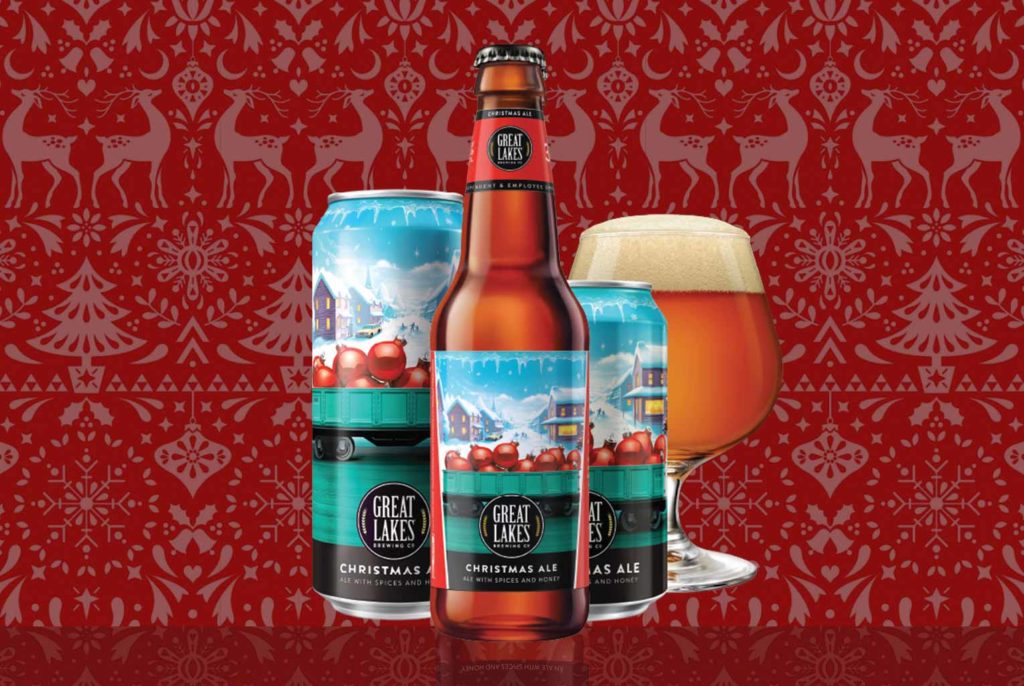
Winter Ale – Distinctive describes Great Lakes Christmas Ale pretty accurately. “You can smell us brewing it around the neighborhood,” says Hunger. “Whenever I get out of the car, and it smells so good, I’m like, alright, we’re doing a batch of Christmas Ale today.”
Courtesy of the vast amounts of both fresh ginger and cinnamon sticks (3.5 tons of each, to be exact), Christmas Ale packs a spicy wallop. But with an incredible smoothness. “Float like a butterfly, sting like a bee” comes to mind here. “It’s very smooth,” says Hunger. “The spices are there, but it’s not overly spiced. I like to say it’s a beer that a Bud Light drinker can sit down, drink, and enjoy along with craft beer connoisseurs.”
Like other Christmas beers on this list, Great Lakes’ version pours a deep amber. A reasonably complex malt bill of roasted barley, special roast crystal malt, and wheat build the backbone for those bright spices.
“When you taste it, it’s going to be smooth; it doesn’t really have a bite,” says Hunger. “You’ll taste that malt sweetness, some floral character from the honey comes through, and then some of the mild spices you got in the smell will also come through in the taste. Some people pick up ginger more, and some people cinnamon. … [It] usually has a pretty clean finish. It won’t linger like a big hoppy IPA and finish pretty smooth.”
Old Jubilation Ale – Avery Brewing Co.
Boulder, CO
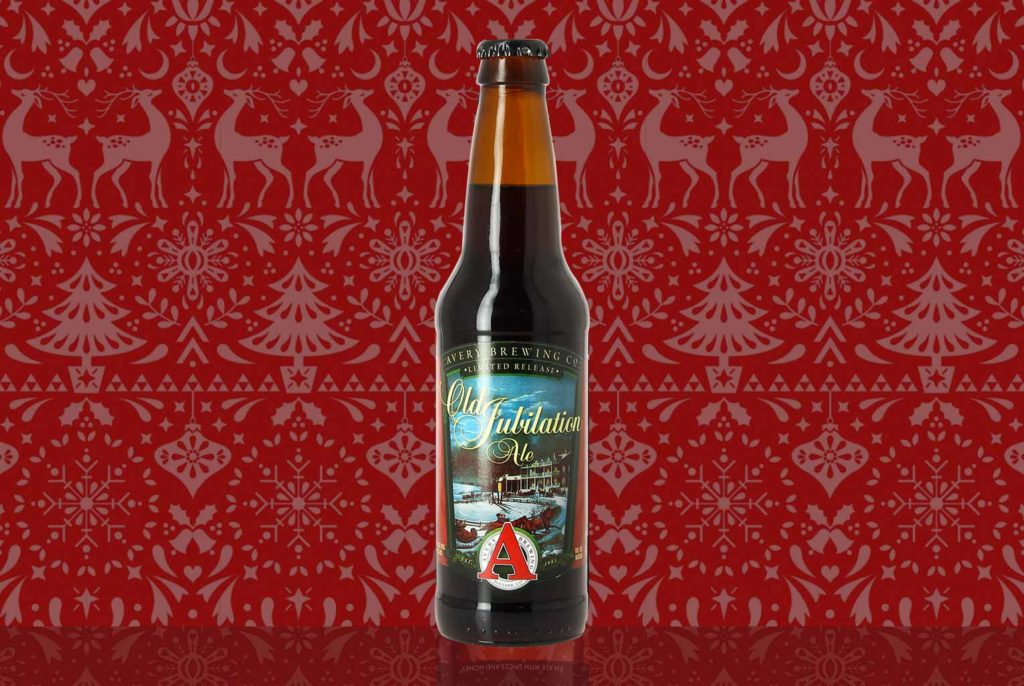
Old Ale – Made in a style you rarely see, Old Jubilation harkens back to almost A Christmas Carol-like times. This is a slightly different take on a Christmas-style beer. Forgoing classic holiday spices, Old Jubilation relies instead on five specialty malts to give the beer a deep, dark, roasted mahogany color.
Those malts also lend the beer a rich, textured, coffee-chocolate aroma and flavor with a strong nutty backbone.
If this beer were a Christmas carol, it would probably be “Chestnuts Roasting on an Open Fire.”
Christmas Ale – Bell’s Brewery
Comstock, MI
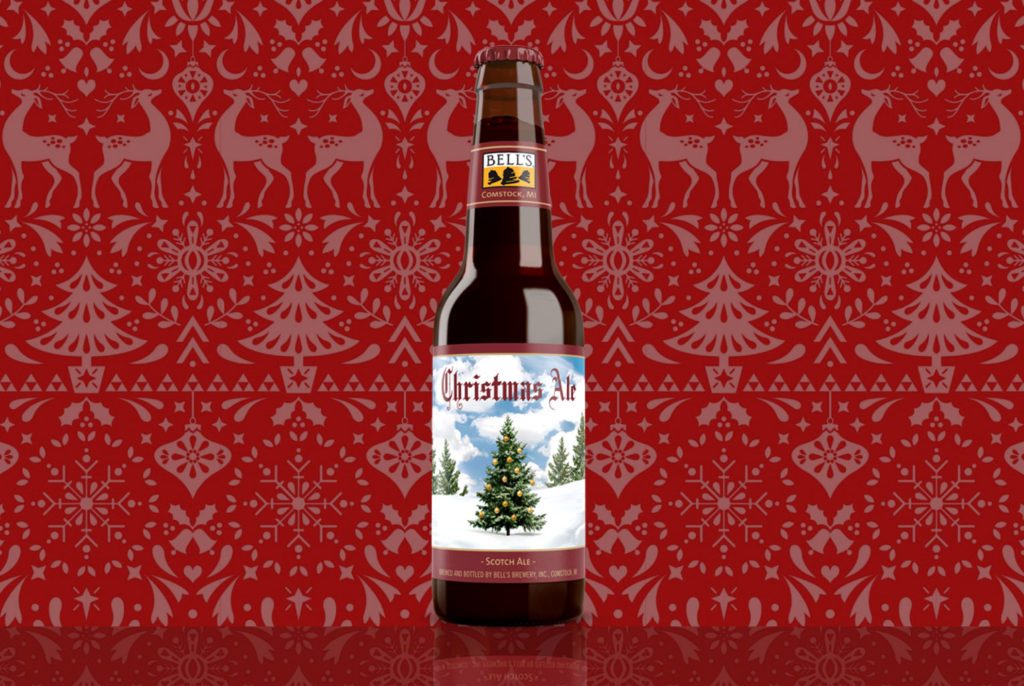
Scotch Ale / Wee Heavy – Only available from October through December, Bell’s Christmas Ale rings all the right notes for a traditional holiday beer and then some. Considered a Scotch ale or wee heavy, Bell’s Christmas Ale clocks in pretty high in the alcohol content department at 7.5% ABV. So consider this one a fireside sipper.
Think of any holiday dessert, and you’ll find those notes here: sticky toffee pudding, ginger snaps, snickerdoodle cookies. An indulgent treat, Christmas Ale is as synonymous with the holidays as a plate of cookies and a glass of milk.
Who knows, St. Nick might like that better.
Jubelale – Deschutes Brewery
Bend, OR
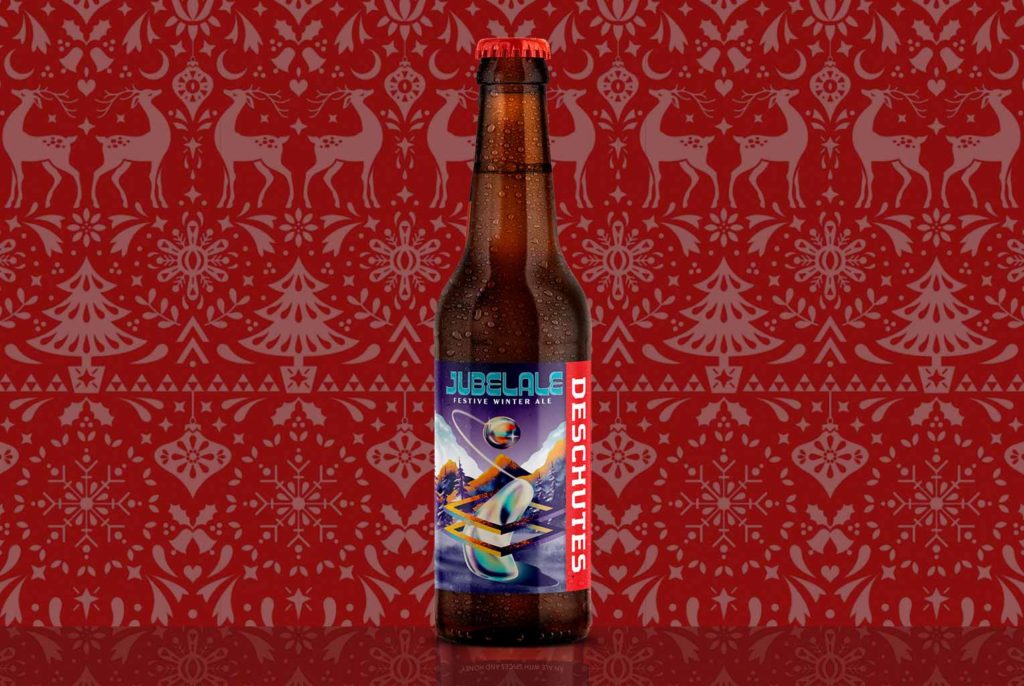
Winter Ale – Speaking of tradition, Deschutes Jubelale sits on the shelf up there with Anchor Christmas Ale and Sierra Nevada Celebration. First brewed in October 1988, Jubelale has stood the test of time.
Opening as a brewpub in June of 1988, Deschutes wanted to create a beer to celebrate Christmas that same year. Fashioned as a English strong winter ale, Jubelale was Deschutes first bottled beer. They released thirty-five cases of 750mL bottles capped by hand.
According to Deschutes’ first brewer, John Harris, the brewery bought used champagne bottles, cleaned and sanitized them, and took the labels off, hand-labeling their own makeshift design.
Over thirty years later, Jubelale features a different label each year, often showcasing a local Pacific Northwest artist.
And the beer inside remains timeless, pouring a beautiful deep amber “with notes of chicory, earth, spice, and fruit,” according to the beer’s Untappd description.
Consider Jubelale kind of like a Yule fire that never stops burning.
Christmas Ale – Brouwerij St. Bernardus
Watou, Vlaanderen, Belgium
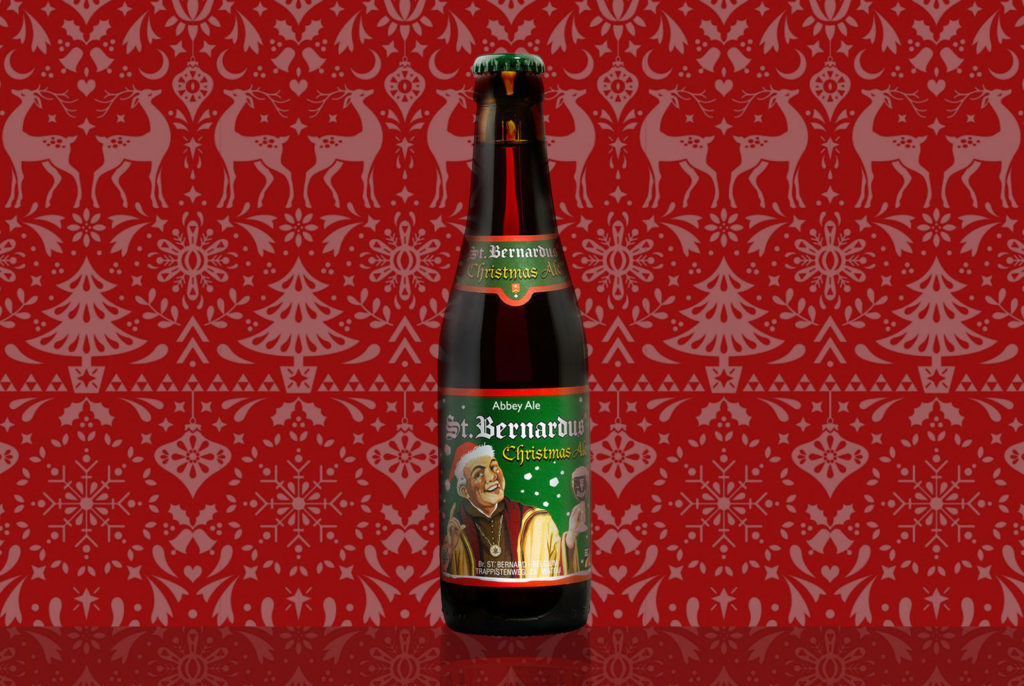
Winter Ale – Belgium has a brewing history deeper than the U.S. can imagine. And the holidays are nothing if not about tradition.
Tracing its roots back to the early nineteenth century, Brouwerij St. Bernardus began when monks at the Saint-Sixtus Abbey brewed and sold Trappist Ales to make money for the monastery.
In 1945, St. Sixtus decided to limit its brewery operations, partnering instead with a local cheese-making factory. By 1946, the cheese factory morphed into St. Bernardus Brewery. The partnership allowed the monks to brew with an acclaimed St. Sixtus yeast strain, which has now wound its way into most St. Bernardus beers, including Christmas Ale.
A very dark Belgian strong ale, St. Bernardus Christmas Ale pours out midnight black with flecks of garnet. On the nose, predominant holiday notes such as hot cocoa, molasses, and gingerbread dominate. On the sip, you’ll find dried dark fruit, warm baking spices, and dark chocolate.
Big and boozy, Christmas Ale is the hearty drink to get you through those cold winter nights…or family dinners.

